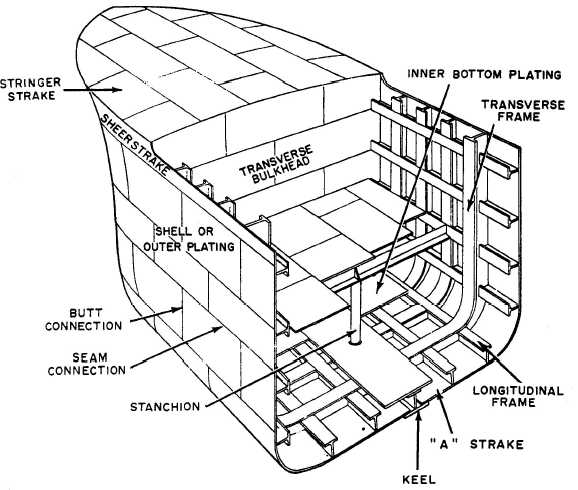| |
PLATING
A ship is structurally a box girder. Shell
plating forms the sides and bottom of the box
girder, and the weather deck forms the top. The
point where the weather deck (main and
forecastle decks) and the side plating meet is
called the deck edge or gunwale (pronounced
gun-ul). The location where the bottom plating
and the side plating meet is called the bilge.
Usually the bottom is rounded into the side of
the ship to some degree; this rounding is called
the turn of the bilge.
Most merchant ships, aircraft carriers, and
auxiliary ships have a boxlike midship section with
vertical sides and a flat bottom, as shown in figure
17-1. High-speed ships such as destroyers and
cruisers, however, have rising bottoms and broad,
rounded bilges. This shape is partially, although not
entirely, responsible for the high speed of these ships.
Individual
shell
plates
are
usually
rectangular in shape; the short sides are referred to
as the ends, and the long sides are called edges. End
joints are known as butts and edge joints as seams.
Plates are joined together at the butts to form long
strips of plating running lengthwise; these fore-and-
aft rows of plating are called strakes. The uppermost
side strake, at the gunwale, is known as the sheer
strake. It is thicker than most strakes since it must
withstand high stresses at these corners as the ship
bends over wave crests. The outer weather-deck
strake, known as the stringer strake, also contributes
to the strength of the hull. The shell plating, together
with the weather deck, forms the watertight envelope
of the ship. The internal structural members of the
hull reinforce the watertight capacity of the hull.
Figure 17-1.—The ship’s basic structure.
17-2
|

